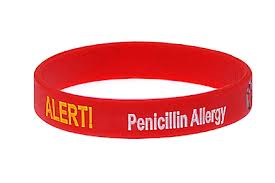 Allergies to penicillin are common. About 10 percent of people report a positive history to the penicillin family. However, the true allergy rate is much lower, as people may confuse an adverse drug effect with a true allergic reaction. After all, penicillin allergy may resolve over time. Only about 20% people remain allergic to penicillin after 10 years without exposure.
Allergies to penicillin are common. About 10 percent of people report a positive history to the penicillin family. However, the true allergy rate is much lower, as people may confuse an adverse drug effect with a true allergic reaction. After all, penicillin allergy may resolve over time. Only about 20% people remain allergic to penicillin after 10 years without exposure.
Penicillin is the most commonly prescribed antibiotics and works very effectively. This family has names end with -cillin: Penicillin G, nafcillin, oxacillin, cloxacillin, dicloxacillin, ampicillin, amoxicillin, carbenicillin, ticarcillin, and piperacillin. People who are allergic to one of the penicillins usually are considered allergic to the whole family, and hence should avoid the entire group. There will be a great limitation to antibiotics selection when a penicillin allergic patient needs one. So it is important to determine whether a patient is truly allergic, especially when no alternative is available; or patient reports multiple antibiotics allergies, making the selection pool very limited.
Skin testing for penicillin followed by challenge with desired medication if test is negative is the most reliable way to determine such allergy. This should only be performed in a monitored setting – in an allergist’s office or in a hospital.
Testing information: http://www.pre-pen.com/